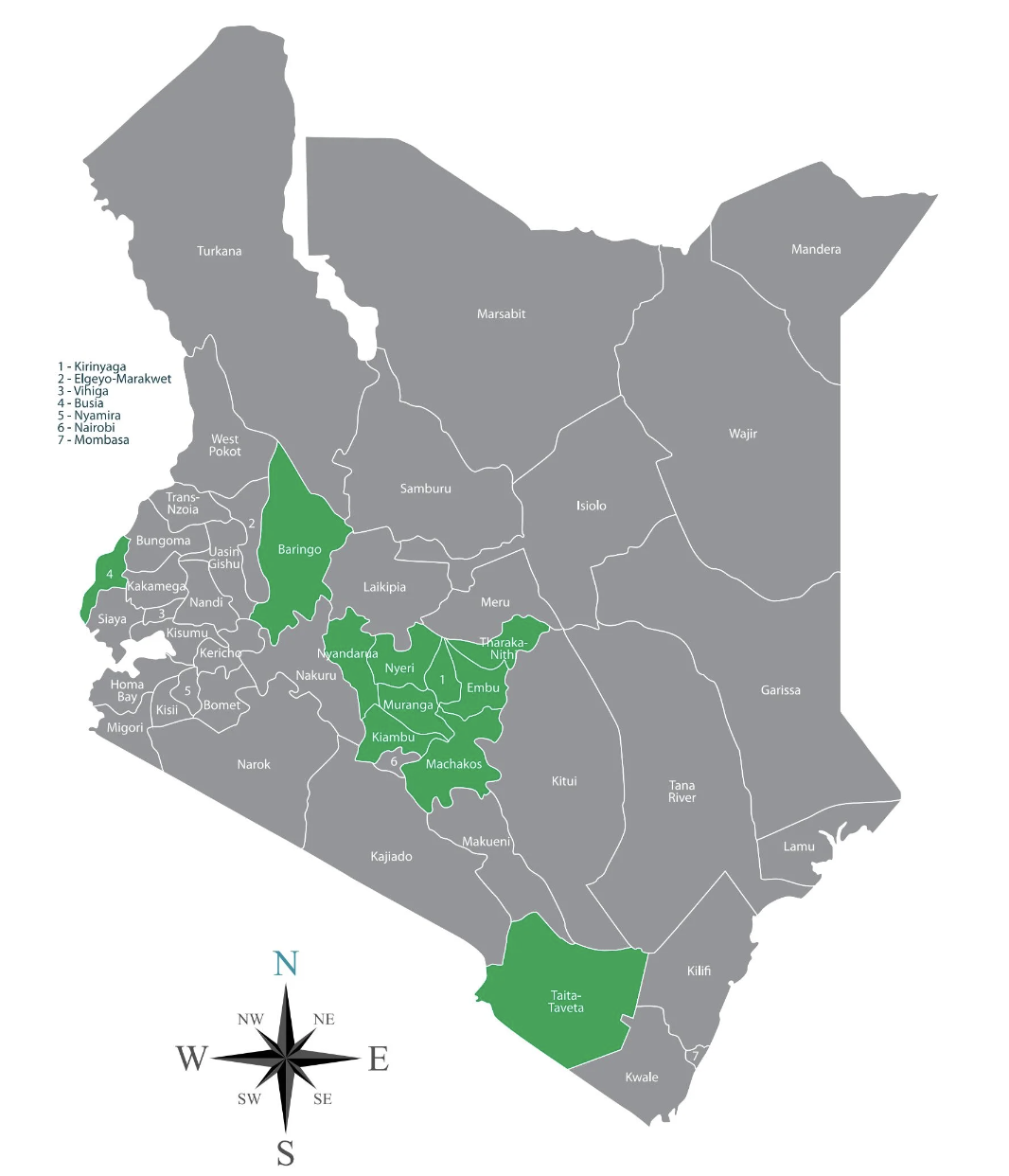
4 minute read
MACADAMIA PRODUCT PROFILE
By Sammy Mutwiri
Product Varieties:
Macadamia integrifolia
Macadamia tetraphylla
Macadamia Commercial Production Regions In Kenya

Current Export Markets

SHARE OF PARTNER IN WORLD MARKET

Emerging Markets identified
The East African Community is in advanced stages of integration, the stage of a common market. The market has been a lead consumer of Kenyan goods and services. The market portends huge opportunity for future growth for nut exporters.
Common Market for Eastern and Southern Africa (COMESA) is a free trade area with twenty-one member states stretching from Tunisia to Eswatini Kenya can make use of this huge market to export Nuts and Nut products.
The European Union (EU) is also among Kenya’s main trading partners. Due to trade preferences extended under the Economic Partnership Agreement (EPAs), the market is poised to absorb additional arrays of goods and services including nuts and nuts products.
The United Kingdom has been a bedrock and star performing market within the EU. However, due to the ongoing socio-economic and political dynamics associated with the BREXIT, the market will, as a distinct consumer, continue absorbing Kenyan export of goods and services, and with the current bilateral negotiation on going, Kenya can push for export of Nuts and nut products to the UK.
The United States of America (USA) is already a strong partner and as a result of the African Growth and Opportunity Act (AGOA), and the ongoing bilateral.negotiation, if successfully concluded, the products potential and market share is poised to increase as a result of better uptake of Kenyan products and maximization on the possible 6400 tariff lines which includes Nuts and Nut products.
The African Continental markets are integrating under the African Continental Free Trade Area (AfCFTA) which has set the tempo for a vibrant market environment that will absorb an increasing portion of Kenyan Products, both goods and services gives Kenya an opportunity to export the Nuts and Nut products.
The rest of the European Continental market is a potential market for Kenyan export of goods and services. New demand for Nuts and Nut products is likely to come from the former economies in Eastern Europe, Eurasia and Russia that were once constrained by ideological considerations.
China and India are emerging as Kenya’s leading trade partners especially as lead import sources resulting in widening trade deficits. Populations and market sizes of the two markets have the potentials of igniting strong Kenyan export flows in the medium term.
Challenges facing the sector
Pests and diseases: Macadamia trees are susceptible to various pests and diseases, including macadamia nut borer, fungal infections, and root rot. These can significantly affect yield and quality if not properly managed.
Limited access to markets: While Kenya is a major producer of macadamia nuts, accessing international markets can be challenging for small-scale farmers and processors. Lack of market information, high transportation costs, and trade barriers can hinder market penetration and export growth.
Price volatility: Global macadamia nut prices can be volatile, impacting the income of farmers and industry profitability. Fluctuations in prices can make planning and investment decisions difficult for farmers and businesses within the sector.
Lack of processing capacity: The macadamia sector in Kenya is still developing its processing capacity. Limited infrastructure for value addition, such as processing facilities and equipment, can restrict the ability to produce higher-value macadamia products, thereby reducing potential earnings.
Inadequate extension services: Access to quality agricultural extension services is crucial for farmers to improve their macadamia cultivation practices. However, the availability of extension services in remote macadamia-growing areas may be limited, affecting farmers’ ability to adopt best practices and address challenges effectively.
Climate change and water scarcity: Climate change poses risks to macadamia production, with changing weather patterns and increased frequency of droughts affecting water availability. Macadamia trees require adequate water, and water scarcity can impact yields and overall orchard health.
Lack of farmer education and training: Many smallholder macadamia farmers may lack access to proper education and training on modern macadamia farming techniques. Insufficient knowledge about optimal orchard management practices, pest control, and post-harvest handling can limit productivity and quality.
Regulatory and policy challenges: Inconsistent or unclear regulations, licensing requirements, and policy frameworks can create uncertainties within the macadamia sector. Streamlining regulations and providing a conducive policy environment can support industry growth and attract investment.
Quality control and standards: Maintaining consistent quality and meeting international standards is crucial for market competitiveness. Ensuring effective quality control measures and adherence to food safety standards can be a challenge, particularly among small-scale farmers and processors.










